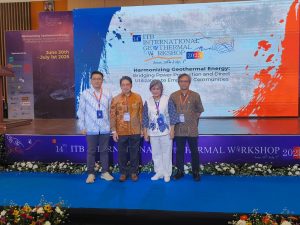Jakarta – President Joko Widodo has approved the revision of a ministerial regulation governing rooftop solar power plants (PLTS) to accelerate the spread of solar panels among the public.
Minister of Energy and Mineral Resources (EMR) Regulation No. 26/2021 on Rooftop Solar Power Plants Connected to the Electricity Network of Holders of Electricity Supply Business License for Public Interest has also been approved by EMR Minister Arifin Tasrif and is just waiting for promulgation.
Andriah Feby Misna, Director of Various New and Renewable Energy at the Directorate General of New Renewable Energy and Energy Conservation (NRE EC) of the Ministry of Energy and Mineral Resources, said that one of the critical points in this revision is the elimination of the obligation for the community to export electricity to PLN. “This means that if the consumer sends (electricity) to PLN, the grid will not be compensated as a decrease in account fees,” she explained.
This revision was previously stalled due to the potential burden on state finances as compensation for subsidies through PLN. However, Misna believes the Ministry of Finance has mediated the issue. “In the regulation, it has been stated that if, for example, there is an increase in BPP (cost of supply) from PLN, it will later be charged to the state,” she said.
Furthermore, the regulation also revokes the scheme of entrusting electricity generated through rooftop solar power plants to PLN. This is different from the previous one, which forced the entrustment of electricity to PLN. “Later, people who want to install rooftop solar power plants will also have an upper limit formula based on the quota set by PLN based on the approval of the energy authority,” he added.
The revision also includes incentives for rooftop PV users if they experience problems, such as lack of sunlight, so that they can use electricity from PLN. Other substances include increasing the maximum rooftop PV capacity to 100% of installed power based on a quota system, previously only limited to 10%-15%.
This revision also considers various aspects, such as the elimination of excess electricity exports, the elimination of capacity fees for industrial customers, as well as an increase in the frequency of rooftop solar power installation applications, which are limited to 2 times a year.
For existing rooftop PLTS customers, the provisions of the previous regulation are still applied for up to 10 years since the rooftop PLTS operates. With this step, the spread of rooftop PLTS can be more evenly distributed and contribute significantly to efforts to transition energy towards a more sustainable direction. (Hartatik)














